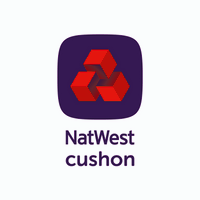What does effective communication look like? Top ways to measure whether your benefits are hitting the mark
First things first, good communications get employees to respond in some way. If they don’t, then the communications haven’t done their intended job; they’re simply not effective.
So what does good look like?
Communication isn’t a one way street
We’ve all heard the old adage “we have two ears and one mouth” and this couldn’t be more true when thinking about effective benefit communications – it needs to be a two way street. We need to do more listening so we can hear what employees want and need.
And this is both in terms of the “what” and the “how”. If you’re telling me about something that’s of no interest to me, no matter how good the communication is, I’m not listening. Conversely, if I‘m interested in the subject matter but the message isn’t being delivered in the best way for me, I’m also not listening.
So the first action is to get the benefit mix right – and that’s about understanding the needs of your employees. If I don’t see it as a benefit, then it’s not a benefit! The second action is to think about how you’re communicating – most people today digest communications digitally at a time that suits them. Why should information about my benefits be any different?
And the best listening device is a survey. Before you finalise your benefit renewals or embark on a pensions communication roadshow, ask your employees what they want, and check back in with them afterwards.
It’s an old tool but an effective one!
Myth: Financial education is separate from communications
It isn’t! And in fact it’s probably the most important part of the communication mix as it leads to understanding, which in turn leads to action and that’s the whole point. I might have a great workplace pension but if I don’t understand it or it feels too complicated, I’ve switched off and I’m definitely not engaged.
I need to understand it’s value to me regardless of where I’m at in life – 30 years away from retirement or just about to retire – this is where good financial education steps in.
It can be a “light bulb” moment for employees, where they’re aware of certain benefits but don’t appreciate or understand how they can help in practice.
For instance, we run a first time home buyers webinar which is about helping people get on the housing ladder. It’s only after attending this session that many younger employees suddenly realise how the Lifetime ISA, with a 25% government bonus, can really help them save for a deposit. It’s about presenting the benefits on offer within the context of a real issue that concerns employees. It’s a powerful way to get people engaged with their benefits.
Make it interesting and easy
Financial education and the wider communications exercise is not about lecturing, it’s about bringing what most people consider dry subjects, to life. What’s more interesting? Listening to someone explain the finer details of the Lifetime ISA outside of any context or learning everything you need to know about buying your first home which happens to include the Lifetime ISA? Financial service products on their own are dry, but explaining them in context can really inspire people to take action.
But again, it’s really important to think about how to deliver financial education. Live online webinars are brilliant as they can allow people to ask questions anonymously and get immediate answers. But it’s important to record these, so people can access them from anywhere and at any time – it means regardless of shifts patterns or annual leave, everyone gets access.
Speak plainly
The biggest barrier to people engaging with their benefits is jargon; it just makes things sound a lot more complicated than they actually are and people tend not to engage with complexity! It’s a great idea to get someone outside of the industry and the company to review any communications – you’ll be surprised at the feedback. When we deal with financial services products and benefits on a day to day basis, certain words and phrases become second nature, but to someone else it just sounds complicated.
The acid test
As I said at the beginning, an effective benefits communication should illicit some sort of response; if it doesn’t it hasn’t done its job. So how should you measure success?
There are a number of stats that you should look at:
- benefit take-up rates
- webinar attendee rates
- webinar feedback
- email click and open rates
- survey results
- activity levels – e.g. pension contribution changes.
Individually and collectively, these stats will tell you how effective your communications are. But it’s important to act on them – if they’re not doing their job, change them!
Supplied by REBA Associate Member, NatWest Cushon
NatWest Cushon is a workplace pensions and savings provider with an award-winning proposition.








